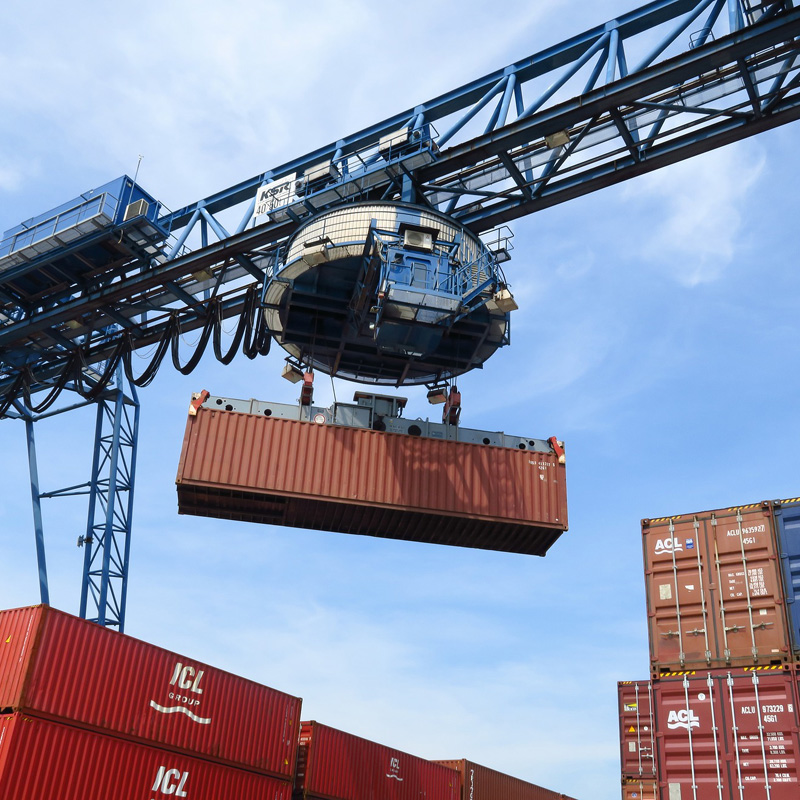What kind of goods can not be loaded for shipping containers?
- Author:Alvin
- Source:HKSG-GRUP
- Release Date:2017-09-14
What kind of goods can not be loaded for shipping containers?


In fact, most of the goods can be used for container shipping, only a few are not suitable.
According to the national "on the development of China's container transport a number of issues" in the provisions of the container for the goods loaded for the 12 categories, namely, pay electricity, equipment, small machinery, glass ceramics, handicrafts; print and paper, medicine, tobacco Food, daily necessities, chemicals, needle textiles and hardware, and so on.
Which goods can not handle container shipping?
1, fresh goods. Such as live fish, shrimp, etc., because the sea transport relative to other modes of transport, longer in the time, fresh goods if the use of container shipping, then in the course of transport goods will deteriorate.
2, the weight of the goods exceeds the maximum weight of the container, the goods can not be shipped through the container.
3, large size of the goods can not use the container shipping, some large accessories ultra-high, wide, these goods can only be placed through the bulk carrier in the cabin or deck to transport.
4, the container does not handle military transport. Troops or military enterprises for container shipping, according to the business for processing. Military transport using their own container, no longer by container transport conditions.
In the transport of container cargo, for the safety of ships, goods and boxes, the appropriate container must be selected according to the nature, type, volume, weight and shape of the cargo; otherwise, not only for certain goods can not be carried, but also for improper selection Which led to cargo damage. The selection of containers for containerized cargo can be considered as follows:
(1) clean goods and dirty goods: optional grocery containers, ventilated containers, open top containers, refrigerated containers;
(2) valuables and fragile goods: optional grocery containers;
(3) refrigerated and perishable goods: optional refrigerated containers, ventilated containers, insulated containers;
(4) bulk cargo: optional bulk containers, tank containers;
(5) Animals and plants: selection of livestock (animal) containers, ventilated containers;
(6) Bulky cargo: choose open top containers, frame containers, platform containers;
(7) Dangerous goods: optional grocery containers, frame containers, refrigerated containers.
According to the national "on the development of China's container transport a number of issues" in the provisions of the container for the goods loaded for the 12 categories, namely, pay electricity, equipment, small machinery, glass ceramics, handicrafts; print and paper, medicine, tobacco Food, daily necessities, chemicals, needle textiles and hardware, and so on.
Which goods can not handle container shipping?
1, fresh goods. Such as live fish, shrimp, etc., because the sea transport relative to other modes of transport, longer in the time, fresh goods if the use of container shipping, then in the course of transport goods will deteriorate.
2, the weight of the goods exceeds the maximum weight of the container, the goods can not be shipped through the container.
3, large size of the goods can not use the container shipping, some large accessories ultra-high, wide, these goods can only be placed through the bulk carrier in the cabin or deck to transport.
4, the container does not handle military transport. Troops or military enterprises for container shipping, according to the business for processing. Military transport using their own container, no longer by container transport conditions.
In the transport of container cargo, for the safety of ships, goods and boxes, the appropriate container must be selected according to the nature, type, volume, weight and shape of the cargo; otherwise, not only for certain goods can not be carried, but also for improper selection Which led to cargo damage. The selection of containers for containerized cargo can be considered as follows:
(1) clean goods and dirty goods: optional grocery containers, ventilated containers, open top containers, refrigerated containers;
(2) valuables and fragile goods: optional grocery containers;
(3) refrigerated and perishable goods: optional refrigerated containers, ventilated containers, insulated containers;
(4) bulk cargo: optional bulk containers, tank containers;
(5) Animals and plants: selection of livestock (animal) containers, ventilated containers;
(6) Bulky cargo: choose open top containers, frame containers, platform containers;
(7) Dangerous goods: optional grocery containers, frame containers, refrigerated containers.
